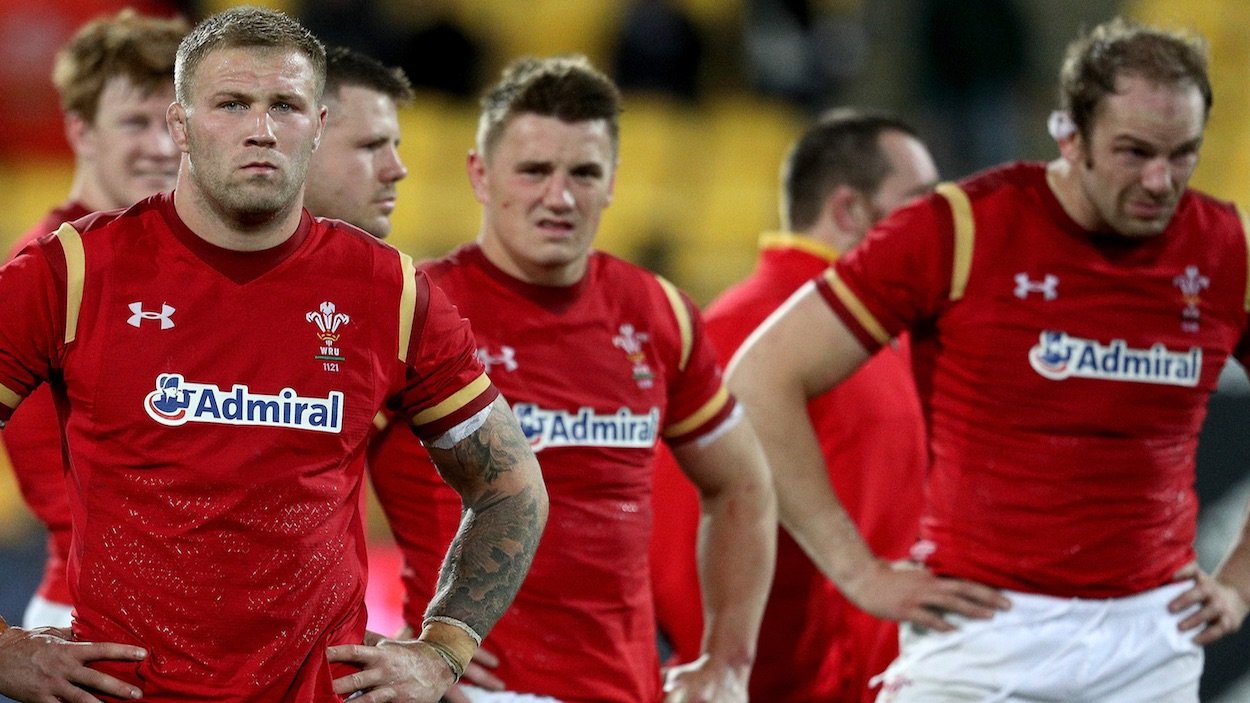Warren Gatland’s squad’s lack of depth has been horribly exposed on their tour of New Zealand, writes Lee Calvert.
In a column a few weeks ago, I made the point that Warren Gatland needed to change his gameplan and set the talent in Wales’ 1st XV free, so that even if his team and their fans leave New Zealand without a victory, they could at least head home with some satisfaction and a few seeds of hope. The previous week has more or less killed these seeds like a drunken farmer who picked up the weedkiller instead of the plant food.
First came the abject humiliation of a team of Welsh squad players being completely dismantled by a thrown-together Chiefs side led by the one and only Stephen Donald. This midweek misery was followed by the second test bringing another defeat at the hands of the All Blacks.
While the test defeat is in many ways for Wales simply a case of being beaten by a better team, the Chiefs defeat flashed in the sky like a humiliating Batman spotlight further highlighting the systemic issues that plague Welsh rugby.
This was a chance for the fringe Wales players to put their hands in the air and demand attention and selection for the test team; instead it turned into a trip to a spelling bee for the dunce class. With the exception of Luke Charteris, who is an established test player anyhow, they were awful. The performances of wingers Eli Walker and Tom James were so bad that for the Wellington test Gatland opted to move Liam Williams, his outstanding fullback, onto the wing and bring in the inexperienced Rhys Patchell, usually a 10, to the unfamiliar number 15 shirt for only his third cap against the best team in the world.
This was not simply a bad week for the squad players, but indicative of the malaise that Welsh rugby’s player development structures have been in for some time and probably will be for a while. Roger Lewis, the previous WRU Chief Executive, left the position under some criticism in 2015 and was replaced by Martyn Phillips. Lewis made a large point on his departure of the success the national team had enjoyed under his tenure: three Grand Slams, a Rugby World Cup semi and a shout for being the best team in Europe. All fair points, but what he failed to mention was how he had abandoned any plans to ensure that this continued.
Professional rugby is an expensive business to run and the teams that compete week in, week out require money to ensure they have the resources to keep bringing through the requisite number of players of the requisite standard to play international rugby. This is a given.
In Ireland, which has a similar regional rugby system to Wales, the IRFU has spent just short of €30m a year on its regions since 2011. By comparison, in 2012 the WRU under Roger Lewis spent £15.1m on the regions, in 2013, it was £16.9m. In 2013, the IRFU spent €32m. Stark differences.
The Welsh Rugby Union under Lewis simply did not hand over enough money to ensure that that the players continued to be produced. Players cannot be complacently knitted from some magical twine of previous success, it takes a large amount of concrete investment and commitment to the part those further down the chain play in creating elite success.
This lack of investment has led to dwindling success in domestic and European competition for Welsh regions. The national team’s wider resources have been growing weaker since 2012, something which was ruthlessly highlighted in the pre-RWC2015 injury crisis and which culminated in fifteen squad players being prison shamed by a second/third string Super Rugby team last Tuesday evening.
Moving forward, the WRU under new CEO Martyn Phillips is tied into contracts that Lewis signed, both in terms of income and debt servicing, leaving his ability to free up funds for this essential investment stymied, so it could be some time until the volume of quality players from the regions begins to reach the levels that produced the likes of Leigh Halfpenny, Alun Wyn Jones, Sam Warburton and Jamie Roberts, to name just a few.

























